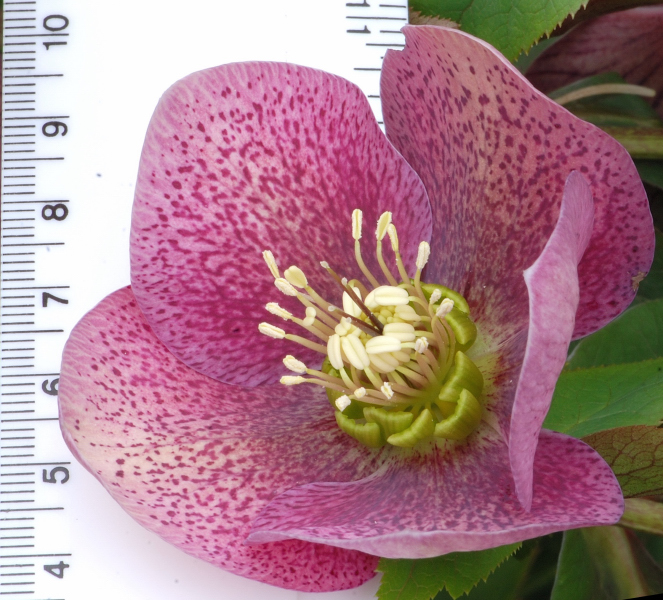The Ranunculaceae family, commonly known as the buttercup family, includes around 60 genera and approximately 2,000 species, primarily distributed in temperate and tropical regions of the world. These plants are generally herbaceous perennials, but some species are woody. Many of these plants are known for their showy flowers and medicinal properties. The most famous genus in this family is Ranunculus, which includes the common buttercup (Ranunculus spp.), known for its yellow flowers and presence in meadows and gardens.
General Description
Plants in the Ranunculaceae family typically exhibit the following features:
- Leaves: The leaves are usually alternate, simple, and can be lobed or entire, depending on the species. They can be fleshy or thin and may have a toothed or smooth margin.
- Flowers: The flowers are typically symmetrical, with five to eight petals. They are often colorful and showy, ranging from yellow to white, blue, purple, or even mixed colors. The flowers are often fragrant and attractive to pollinators like bees and butterflies.
- Fruits: The fruit is typically a follicle or a capsule containing several small seeds. The seeds are lightweight and can be dispersed by wind or animals.
- Growth Habit: Plants in the Ranunculaceae family are generally herbaceous, but some genera, like Clematis, are woody. Some species are climbing or trailing, while others are bushy or spreading.
Chemical Composition
Plants in the Ranunculaceae family contain a variety of bioactive compounds that can have medicinal and, in some cases, toxic effects:
- Alkaloids: Many species in the family contain alkaloids, organic compounds that can have neurotoxic effects. Some of these alkaloids have been used in traditional medicine for pain relief, but many are toxic if ingested in large quantities.
- Saponins: Some species, especially in the Clematis genus, contain saponins, which have antimicrobial and anti-inflammatory properties.
- Flavonoids: Ranunculaceae species also contain flavonoids, which are known for their antioxidant and anti-inflammatory properties.
- Tannins: Species in the family contain tannins, which are astringent compounds used in the treatment of wounds or inflammation.
Physical Properties
- Size: Plants in the Ranunculaceae family vary in size, from small herbaceous species to woody climbers. Species like Ranunculus and Anemone generally grow between 10 and 50 cm in height, while others, like Clematis, can reach heights of over 3 meters if climbing on supports.
- Flowers and Fruits: Flowers are typically small but very showy, with a range of colors. Fruits are generally follicles or capsules containing the seeds.
- Roots and Stems: The family includes plants with tuberous, rhizomatous, or fleshy roots. Stems can be erect, trailing, or climbing, depending on the species.
Production and Harvesting
The Ranunculaceae family is mainly cultivated for ornamental purposes, although some species also have medicinal applications:
- Ranunculus (Ranunculus spp.): Buttercups are cultivated for their colorful and vibrant flowers. They are commonly used in gardens and floral arrangements.
- Clematis (Clematis spp.): Clematis species are primarily grown for ornamental purposes due to their spectacular flowers, which can come in a range of colors and shapes.
- Anemone (Anemone spp.): Anemones are another ornamental plant in the family, valued for their spring or fall-blooming colorful flowers.
- Medicinal Uses: Some species of Ranunculaceae, such as Clematis, have been used in traditional medicine, although many species are toxic and should be used with caution.
Applications
Medicinal
Plants in the Ranunculaceae family have been used in traditional medicine for treating various conditions:
- Ranunculus (Ranunculus spp.): Buttercups have been traditionally used to treat skin problems such as burns and wounds, due to their anti-inflammatory and astringent properties. However, the plant can be toxic if ingested in large quantities.
- Clematis (Clematis spp.): Some species of Clematis have been used for pain relief and to stimulate circulation. However, they must be used with caution, as they can be toxic.
- Anemone (Anemone spp.): Some species of Anemone have been used for treating rheumatic pain and inflammation.
Ornamental
Ranunculaceae plants are widely cultivated for ornamental purposes:
- Ranunculus (Ranunculus spp.) is a popular plant for its colorful and decorative flowers, often used in gardens and as cut flowers in floral arrangements.
- Clematis (Clematis spp.) is a climbing plant that is highly valued in gardens for its spectacular flowers, ranging from white to purple and pink.
- Anemone (Anemone spp.) is used for both its spring and fall blooms, which can be white, red, purple, or blue.
Culinary
Few species in the Ranunculaceae family are used in culinary applications, but some varieties of buttercups have been historically used in small amounts in certain traditional dishes. However, it is important to note that many species are toxic if consumed in large quantities, so their use in cooking is limited.
Environmental and Safety Considerations
While plants in the Ranunculaceae family offer many benefits, there are some considerations to be aware of:
- Toxicity: Many species in the Ranunculaceae family, especially those in the Ranunculus genus, contain toxic compounds that can cause nausea, vomiting, and other adverse reactions if ingested in large amounts. These plants should be handled with caution, especially for medicinal purposes.
- Sustainable Harvesting: Overharvesting of wild Ranunculaceae species for medicinal or ornamental purposes could threaten local populations. Sustainable cultivation practices should be followed to preserve these species.
INCI Functions
- Anti-inflammatory: Reduces inflammation and soothes irritated skin.
- Antioxidant: Protects the skin from oxidative damage caused by free radicals.
- Antimicrobial: Helps fight bacterial and fungal infections on the skin.
- Astringent: Useful for treating minor wounds and improving skin appearance.
Conclusion
The Ranunculaceae family is a diverse group of plants that provides both ornamental beauty and medicinal benefits. Ranunculus, Clematis, and Anemone species are particularly valued for their colorful flowers and versatility in gardens. However, many species are toxic if ingested in large quantities and should be used with caution, especially for medicinal purposes.
![]() Ranunculaceae
Ranunculaceae 

